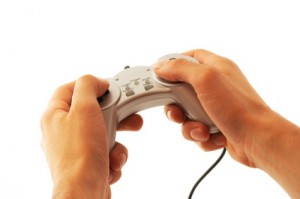Virtual Reality Games Help Stroke Patients Recover Motor Functions
 A new study suggests that virtual reality and other video games involving motion can enhance motor improvement after a stroke. The improvement seems to be greater than the one observed with traditional therapy.
A new study suggests that virtual reality and other video games involving motion can enhance motor improvement after a stroke. The improvement seems to be greater than the one observed with traditional therapy.
This result is quite promising since 55 to 75% of stroke survivors experience motor problem in their arms.
The study was a meta-analysis that looked at 12 previously published studies, for a total of 195 patients. Most were observational studies in which the patients used a variety of virtual (e.g., Wii) and non-virtual (e.g., Glasstron) games during therapy. In the 5 randomized studies, a group of patients was assigned to standard therapy and another to virtual reality therapy. Patients in virtual reality therapy had 4.89 times higher chance of improvement in motor strength compared to patients in standard therapy.
Why would virtual reality therapy be more efficient?
It seems that virtual reality therapy stimulates neuroplasticity more than standard therapy. As you know neuroplasticity is the brain’s ability to change according to our experiences. After an injury the brain shows neuroplasticity by creating new nerve cells and/or connections between these. Neuroplasticity in a specific brain area is triggered by regular stimulation of that area via an activity that involves the function the area supports. The more the activity is challenging, task-specific and novel the more neuroplastic changes are likely to happen. It seems that virtual reality games possess these characteristics and more so that traditional therapy.
Virtual reality gaming therapy may thus be a non-expensive, fun, motivating and efficient alternative to help stroke patients recover motor strength.
Related posts:



Games have even used before in medical treatment of mentally ill patients, its good to know medical experts are finding new and in-conventional ways in treating medical conditions